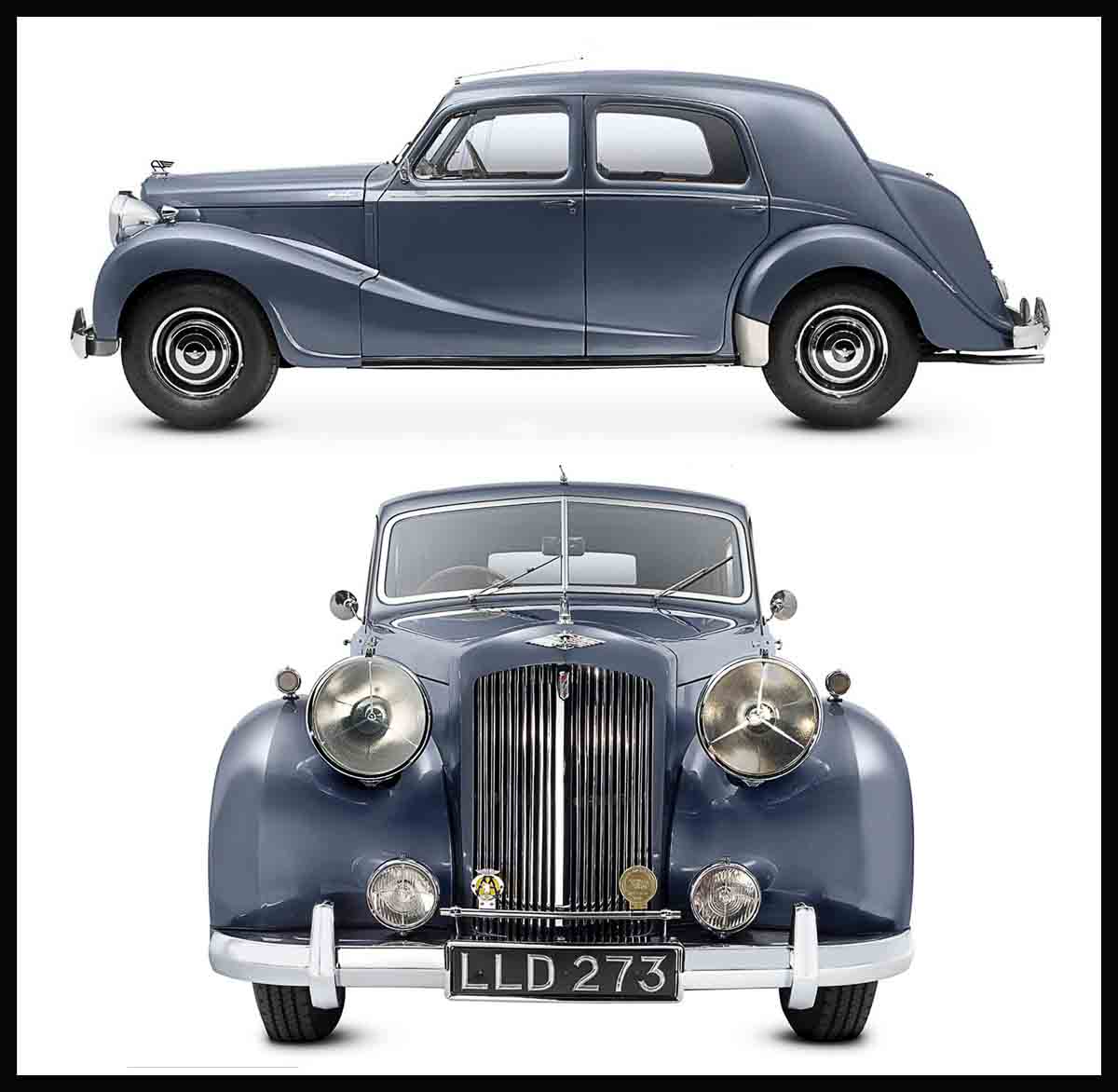
Impressive British Saloons
Britain has always been able to make elegant, formal saloon cars that other countries simply cannot match. After World War II, the premium British car companies rebuilt and reorganized factories that had been previously turned over to war production, where they blended together the best of new and old. They maintained the traditional allure of fine wood and leather interiors, but updated exterior styling to appeal to modern taste. Straight-six and even straight-eight power units—mostly developments of their prewar products—provided effortless smoothness and refinement, while modern technology such as power steering and automatic transmission made these cars easier and more rewarding to drive than ever before.
Austin Sheerline 1947
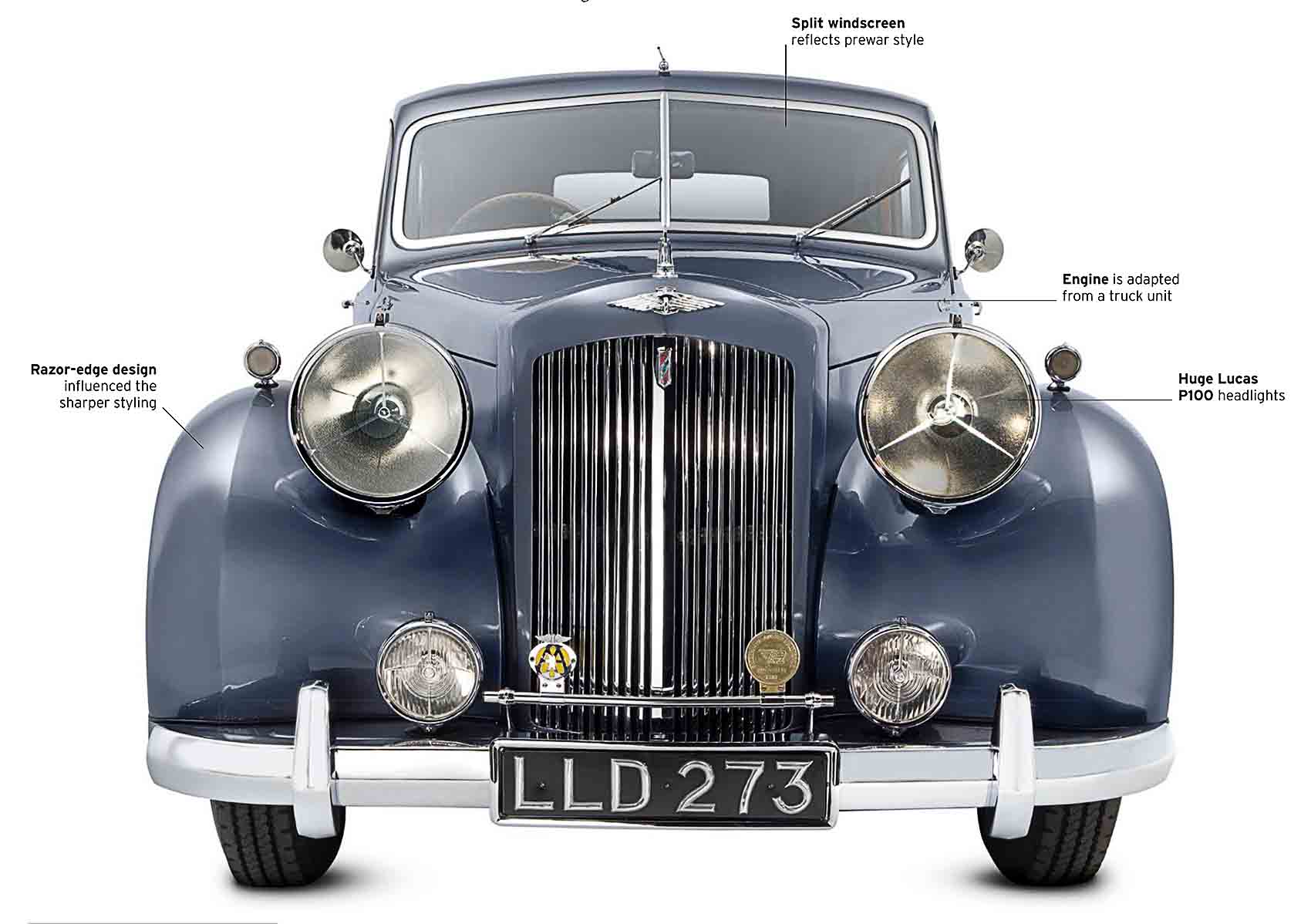
| Origin | UK |
| Engine | 3,993 cc, straight-six |
| Top speed | 83 mph (134 km/h) |
Austin’s vast and regal-looking Sheerline had hints of the “razor-edge” styling that was in vogue at the time, and an interior swathed in traditional wood and leather. The straight-six engine was a prewar truck unit, bored out for more power, which drove through a 4-speed manual gearbox.
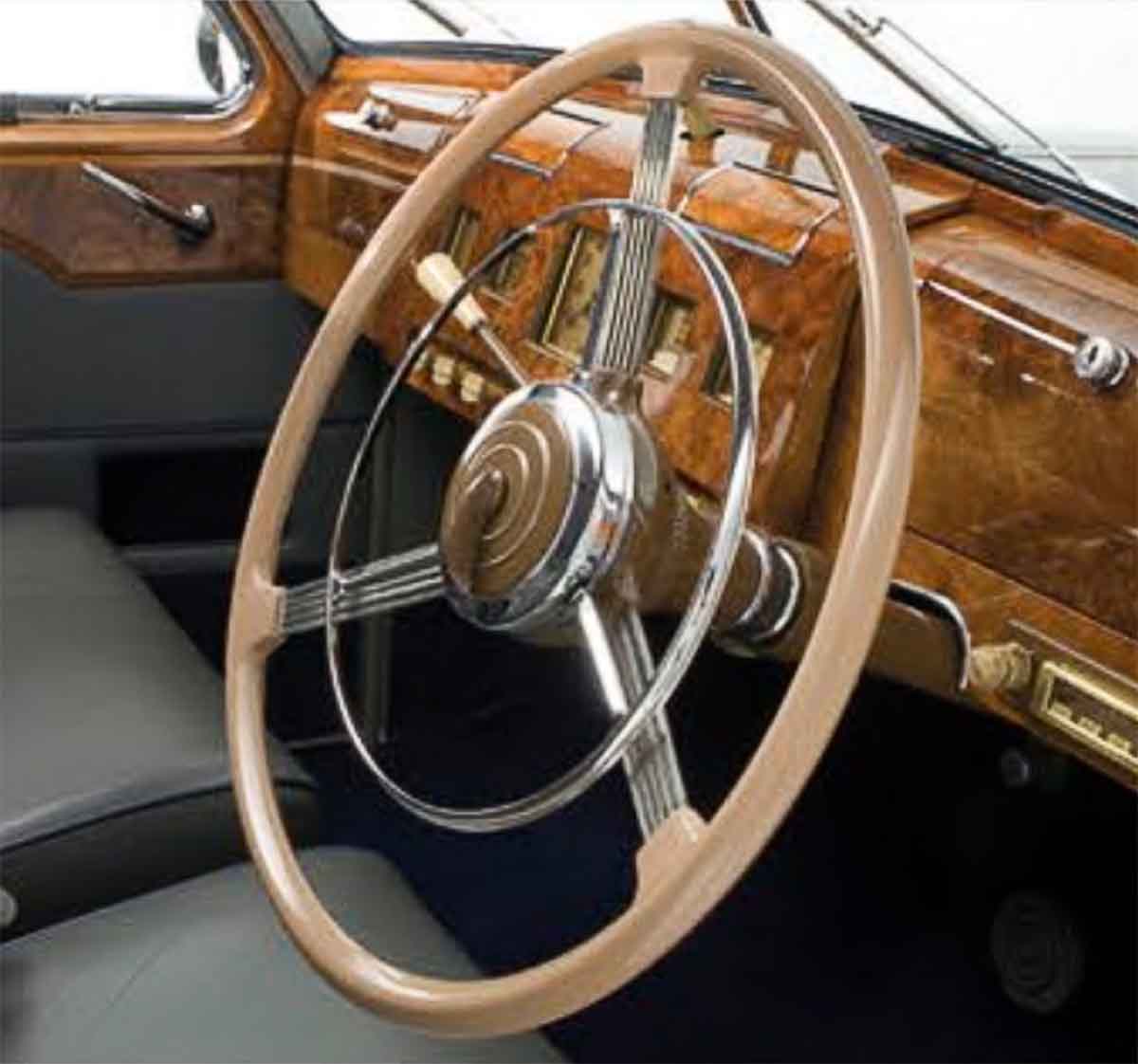
Traditional values
Offering “olde worlde” charm, the dashboard and door cappings were veneered wood, and sguare instruments were set into the centre of the facia. The seat facings were leather, with full-width front seats (despite the floor-mounted gear lever) and plenty of space for passengers at the rear.
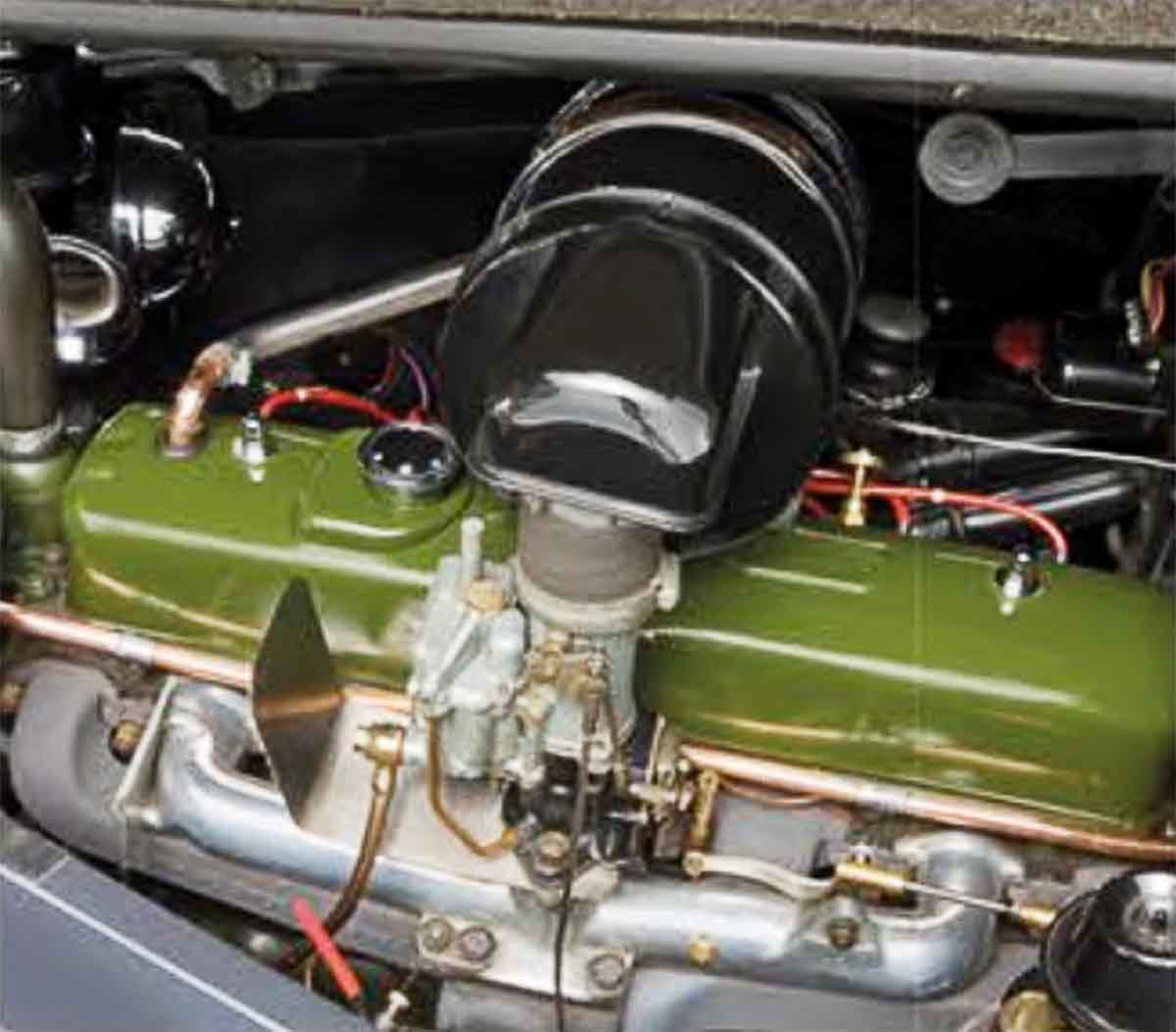
Six-cylinder smoothness
Early Sheerlines (A110) used a 3,460cc, six-cylinder engine, but only a dozen were built before the engine was expanded to 3,395 cc (A125). The later engine produced a smooth 130 bhp, and was incorporated into Austin’s Princess model, built by Vanden Plas, as well as Jensen’s Interceptor and 541.
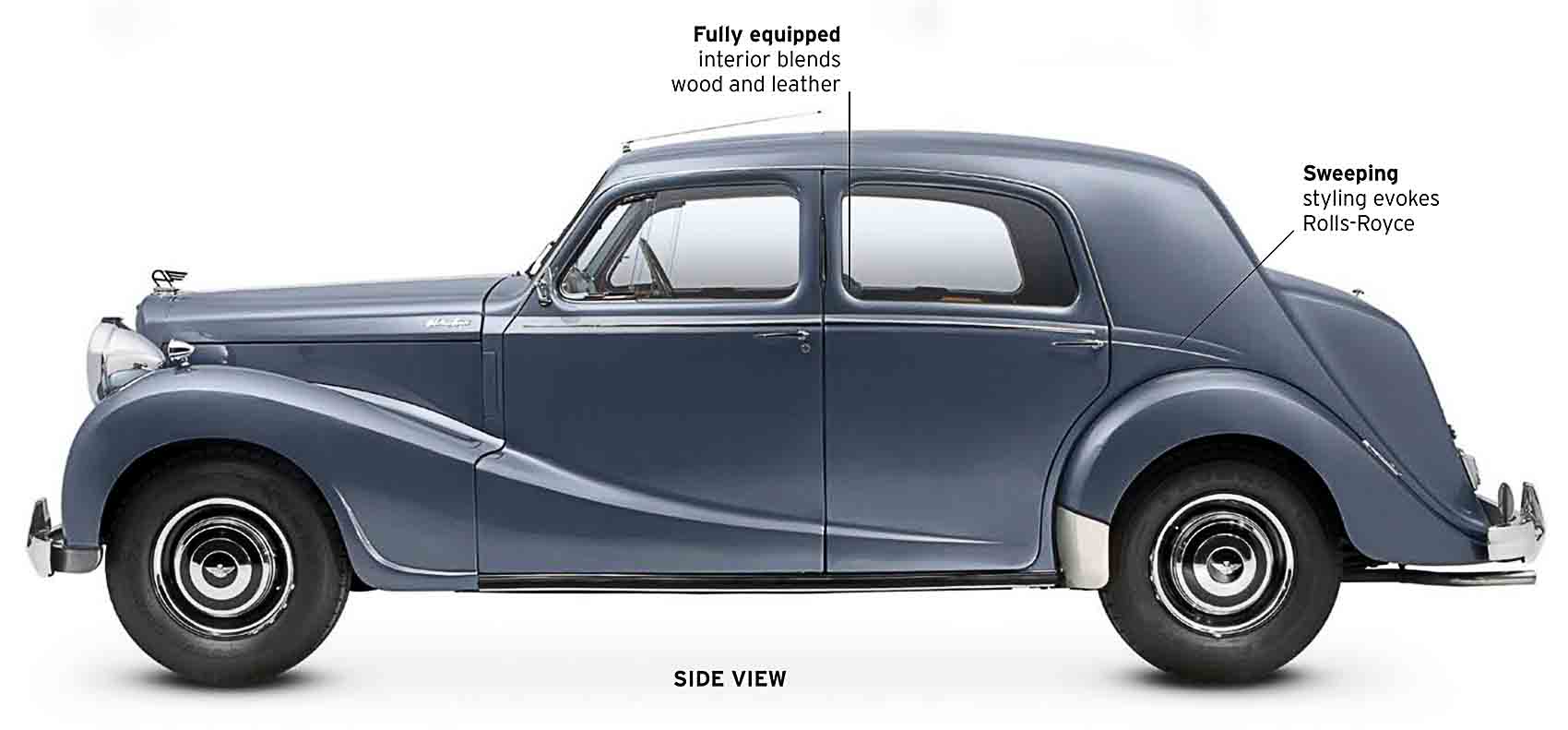
Cheaper luxury
Marketed as an alternative to a Daimler or a Bentley, the Sheerline had all the luxurious features, but at a considerably lower cost.
Daimler DE36 1946
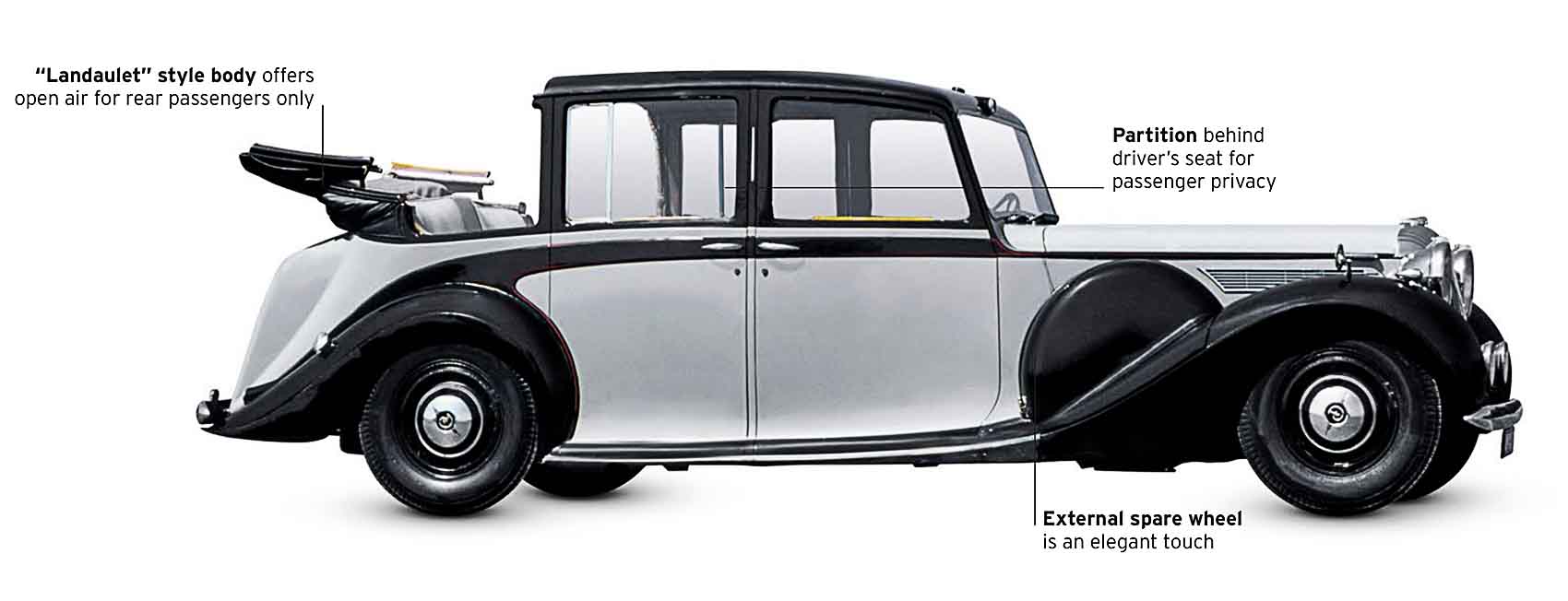
| Origin | UK |
| Engine | 5,460 cc, straight-eight |
| Top speed | 83 mph (134 km/h) |
This huge, post-war Daimler was supplied to seven royal families around the world, including the Windsors, but only 205 were built in eight years. It had immense presence and refinement, and weighed more than two tons. The DE36 contained the UK’s last production straight-eight engine.
Rolls-Royce Silver Wraith 1946
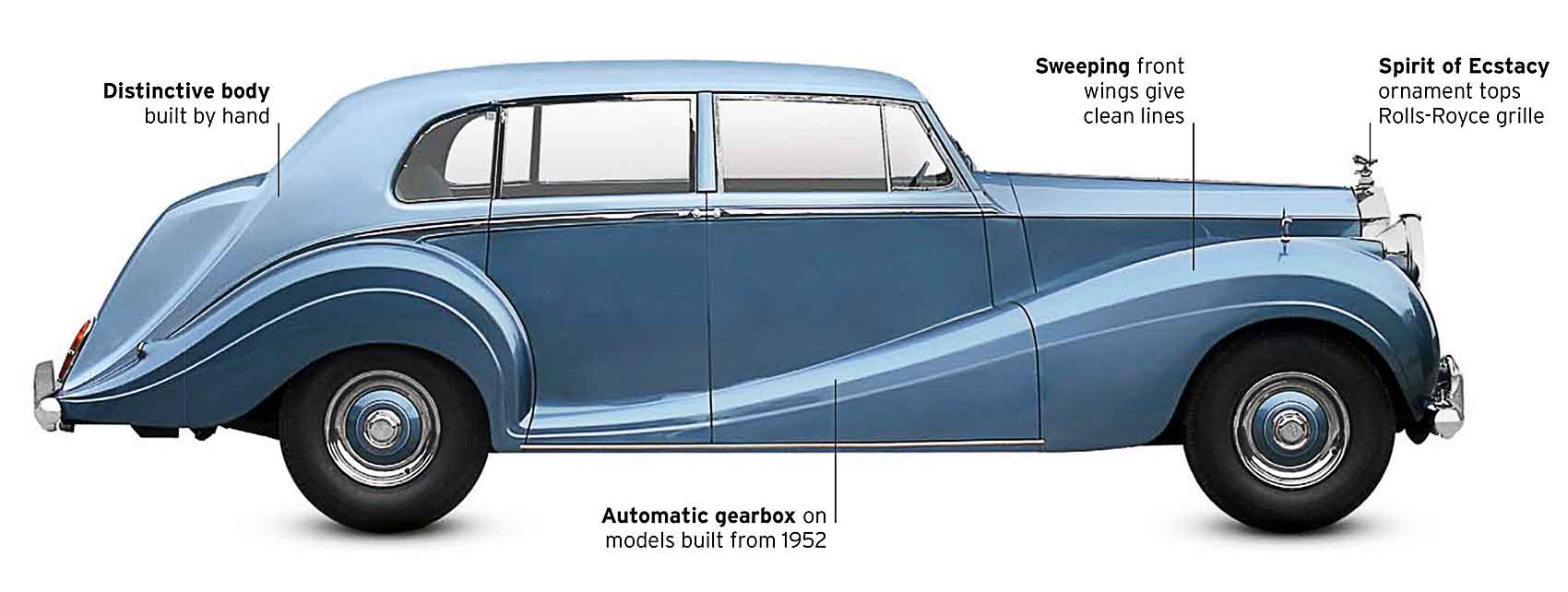
| Origin | UK |
| Engine | 4,257 cc, straight-six |
| Top speed | 85 mph (137 km/h) |
The top UK post-war, luxury car had its body custom-made, generally panelled in aluminium, and the best styles were supremely imposing and elegant. Its smooth, and virtually silent, six-cylinder engine grew in size over the years, first to 4,566cc, then to 4,887 cc by 1959.
Wolseley 6/80 1948
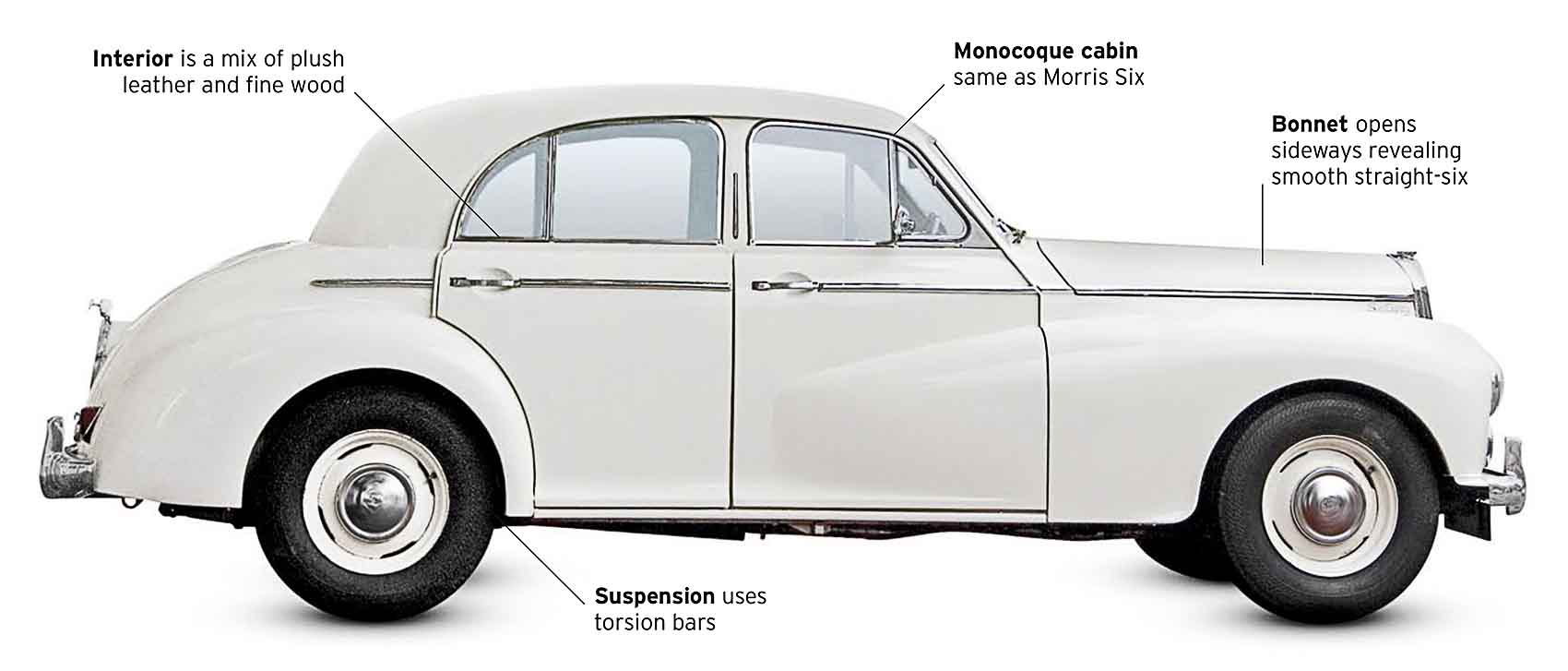
| Origin | UK |
| Engine | 2,215 cc, straight-six |
| Top speed | 79 mph (127 km/h) |
This reliable saloon, based on the Morris Six, became the standard police car in the UK in the 1940s, used for both patrol and pursuit duties. It had a factory-supplied, heavy-duty specification, while a modern overhead-cam engine gave it faster than average performance.
Humber Pullman II 1948
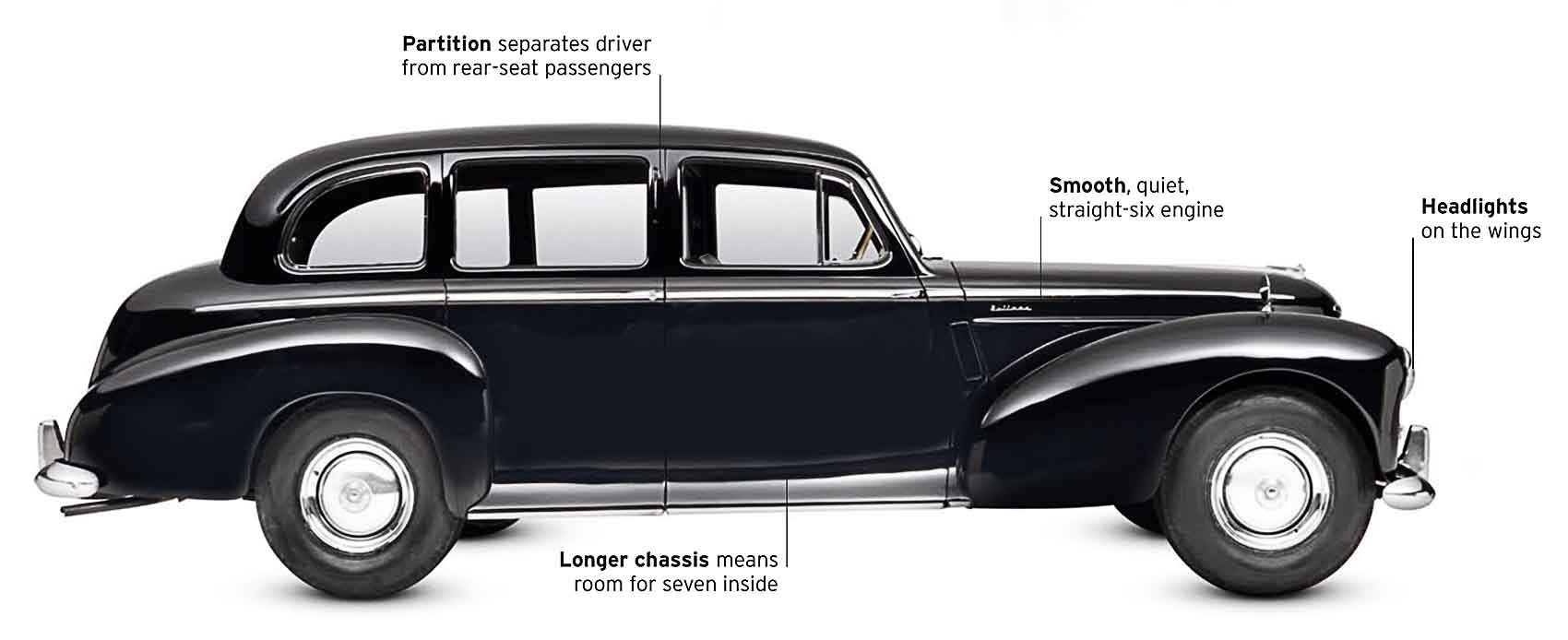
| Origin | UK |
| Engine | 4,086 cc, straight-six |
| Top speed | 75 mph (121 km/h) |
A favourite with government ministers, the revised version of the prewar, seven-seat Pullman limousine was launched in 1948, and featured a longer chassis. Humber also produced the same car without a rear partition, designed for owner-drivers. The car was continued in MkIII and MkIV forms until 1954.
It is a quote. The Classic Car Book – The Definitive Visual History 2016


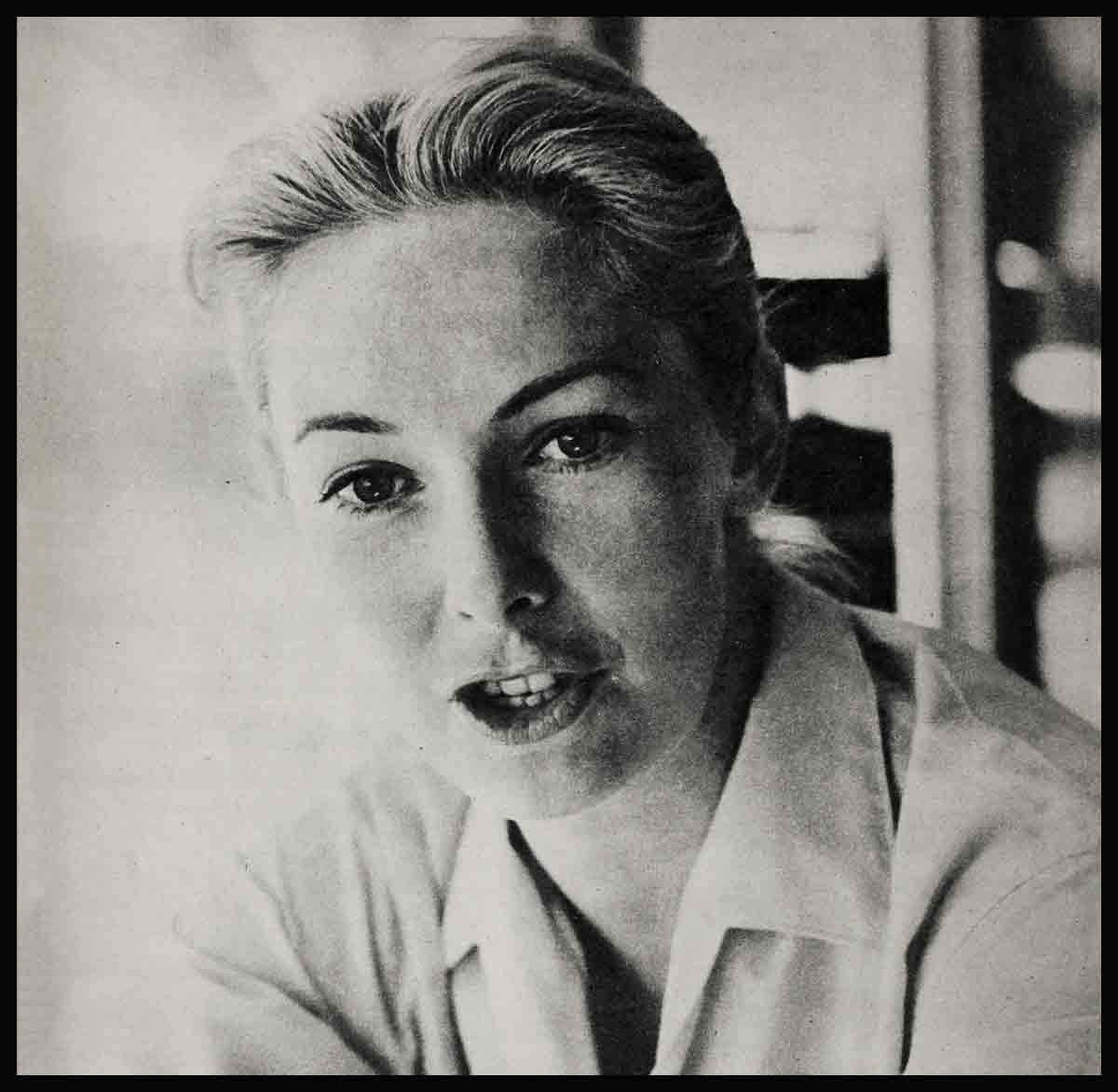
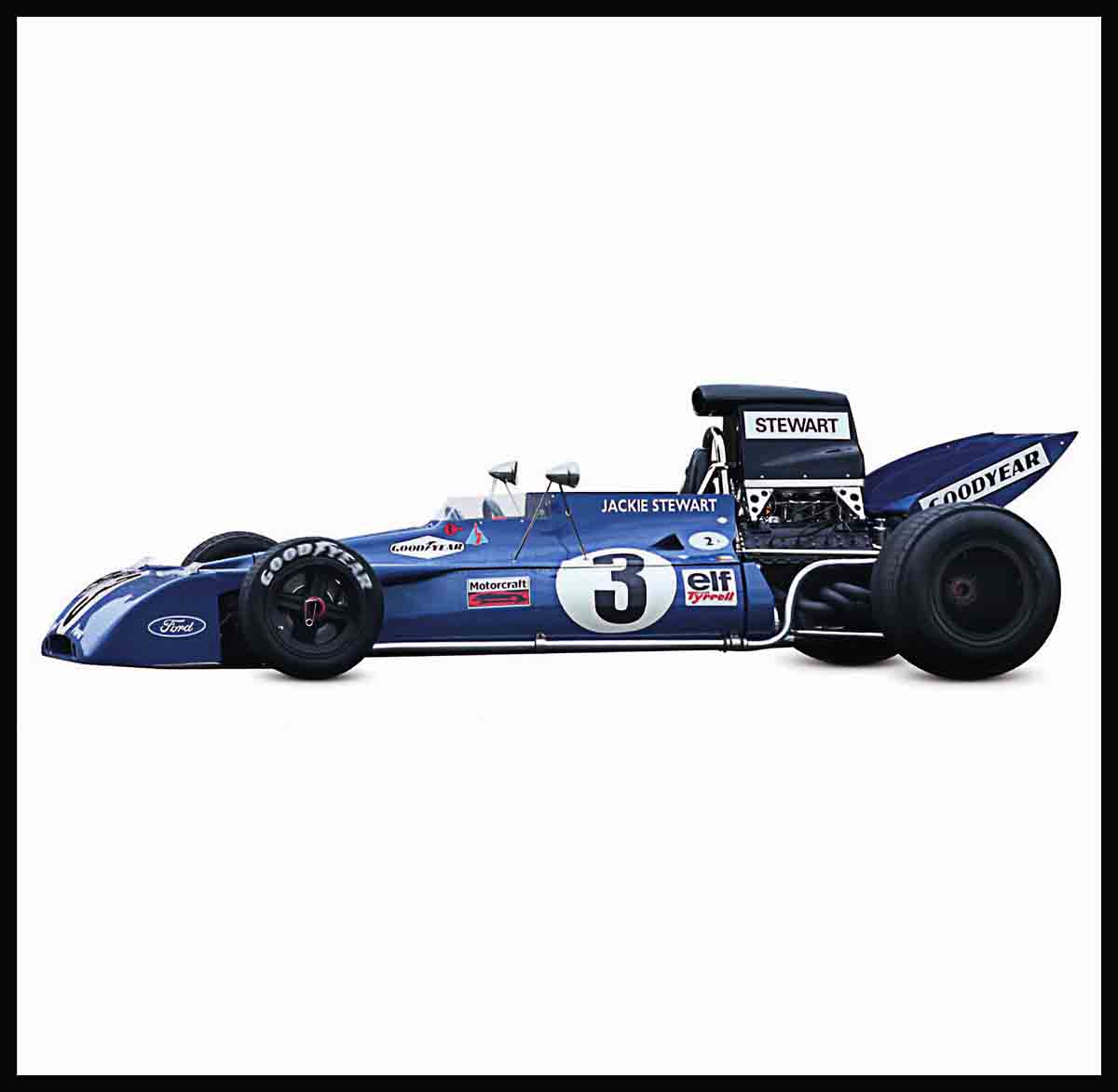
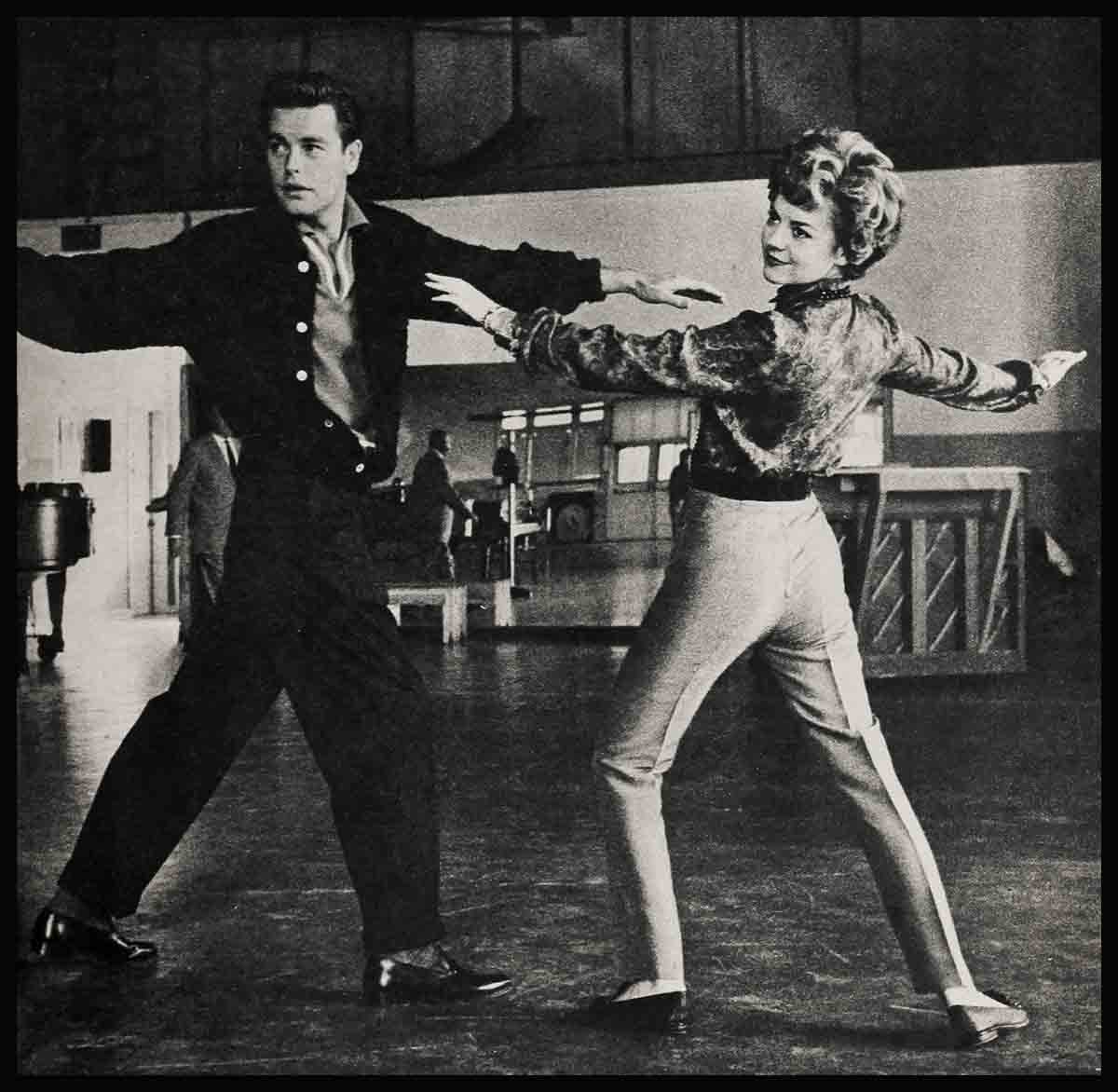
Skwara
21 Ocak 2024I’m impressed by the quality of this content! The author has undoubtedly put a great amount of effort into exploring and arranging the information. It’s inspiring to come across an article that not only gives useful information but also keeps the readers engaged from start to finish. Great job to her for creating such a remarkable piece!